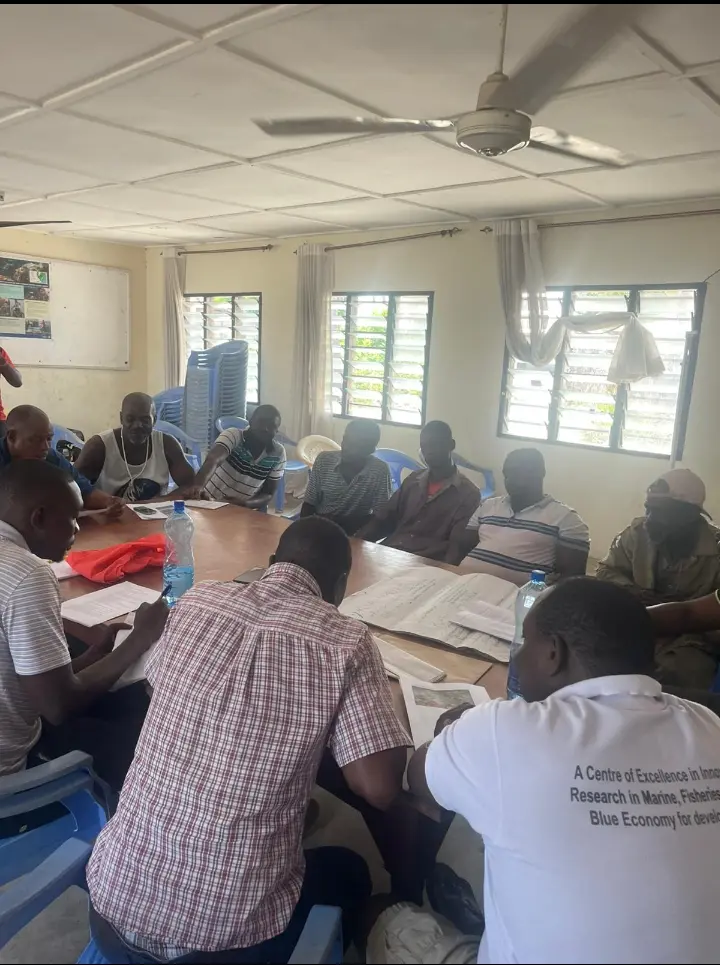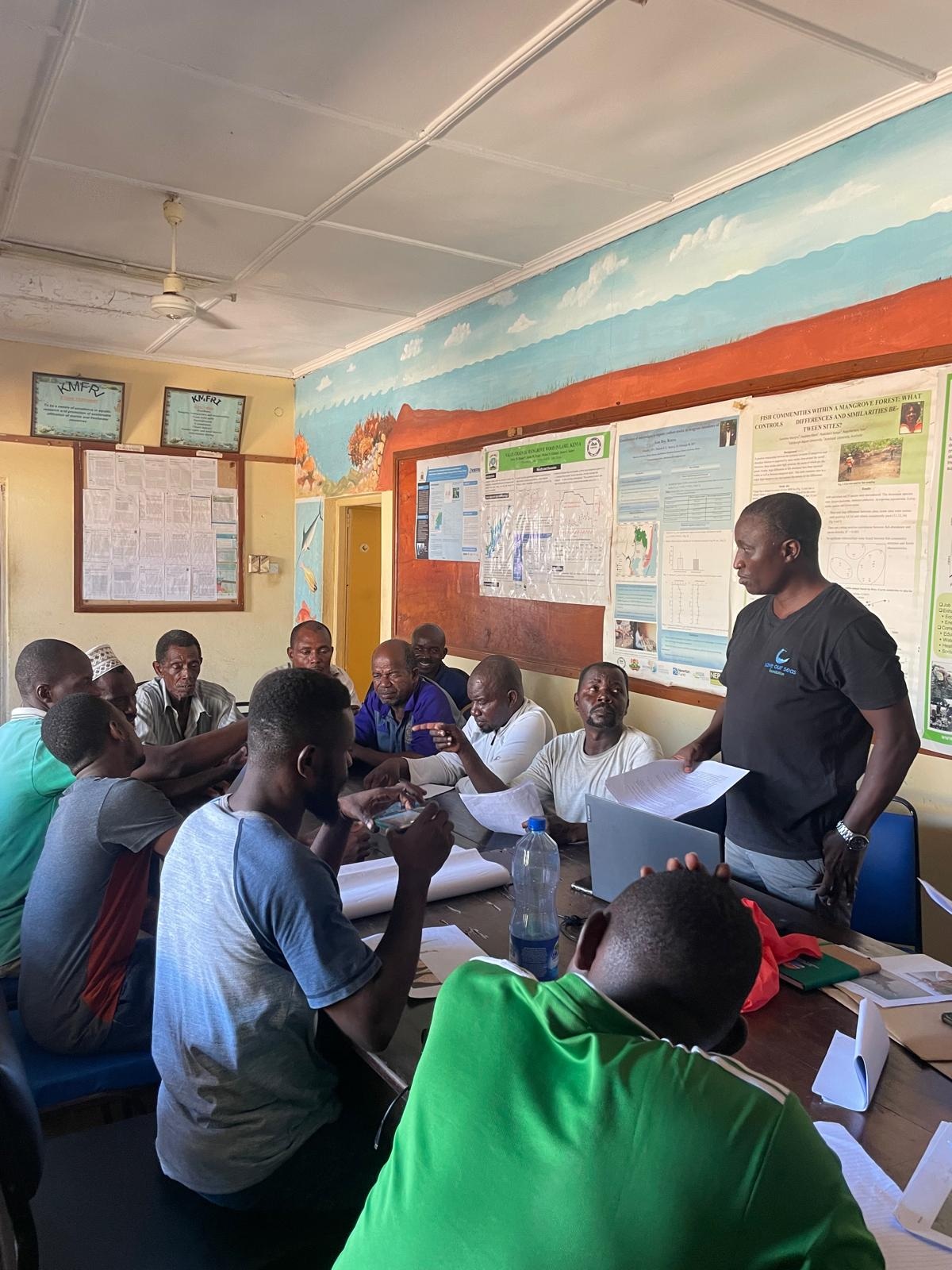Fishers Take the Lead in Protecting the Disappearing Halavi Guitarfish
Interviews and key informant discussions with fishers targeting the elusive Halavi Guitarfish (Glaucostegus halavi) along Kenya’s south coast have revealed striking generational differences in how this species is perceived. For older fishers, the Halavi Guitarfish has become something of a ghost in the water – rarely seen, and a far cry from the abundant catches they remember from decades ago. Their stories speak of a time when landing this species was more common, and their best fishing days are now long behind them. In contrast, younger fishers, those with fewer years at sea, often report seeing the fish “sometimes” or even “often.” To them, G. halavi seems almost normal in the seascape. This discrepancy points to a classic case of shifting baselines, where each generation unknowingly adjusts its understanding of what a healthy ocean looks like.
Building on these insights, the second phase of the project kicked off in March 2025 with a mission: to raise awareness and foster grassroots conservation of the Halavi Guitarfish before it’s too late. Community meetings were held in Jimbo, Shimoni, and Gasi—three vibrant fishing hubs along Kenya’s south coast. In each of these villages, conversations were rich, honest, and deeply rooted in local experience. The consensus? The species is now alarmingly rare, and the pressure from increasing numbers of fishers is a key factor.
One major driver of this pressure is the seasonal arrival of migrant fishers from Pemba, Tanzania, who camp and fish in Shimoni, Gasi, and Jimbo during the northeast monsoon season, typically beginning in October, and return to Pemba at the season’s end. These skilled fishers have brought distinct fishing practices and technologies, including the ringnet fishery and modifications to existing fishing gear, reshaping the local fishing culture. Many local fishers openly acknowledge that their counterparts from Pemba are more experienced and efficient at fishing, leading to increased competition and intensified pressure on vulnerable species like the Halavi Guitarfish.
Place-Based Threats and Local Knowledge
Each community shared unique insights about the threats facing G. halavi. In Jimbo, fishers explained that the species is rarely caught by local fishers but is instead targeted by fishers from the neighbouring village of Vanga, who use gillnets during the southeast monsoon season. In Shimoni, threats include natural predators like large fish and octopus, along with larger-scale stressors like climate change, rising sea surface temperatures, and seasonal heavy rains. Fishers noted that G. halavi is mostly caught during May, June, and July.
In Gasi, fishers reported that G. halavi is primarily caught between October and March, but their habitats are vulnerable to freshwater runoff, flooding, and upstream river flow during the rainy season—factors that negatively affect their shallow coastal environments. Across all three sites, the combined impact of more fishing boats, more advanced gear, and greater competition—particularly during peak seasons—was cited as a significant contributor to the species’ decline.

Meeting with fishers targeting G. halavi at Jimbo village social hall. Photo © Beata Wolgers

Meeting with fishers targeting G. halavi at the Kenya Marine and Fisheries Research Institute offices in Gasi village. Photo © Beata Wolgers
Fishers Chart a New Course for Conservation
Despite these challenges, fishers across the region came forward with bold, practical ideas to reverse the decline. They recommended reducing the number of snorkelers, noting that the masks may scare away fish. They also proposed limiting the use of noisy, engine-powered boats, which disrupt marine habitats. A major concern was the use of spearguns, which fishers agreed should be restricted and tackled through community-led discussions to identify fair, enforceable alternatives.
But the solutions didn’t stop at gear. Fishers supported the idea of experimental temporal closures—seasonal no-fishing periods in key habitats to give the species time to recover. They also proposed setting up restricted zones where G. halavi is still found, creating safe spaces where the fish can breed and thrive. Importantly, the fishers emphasised the need for ongoing sensitisation and education, encouraging community members to understand the species’ ecological role and take ownership of its protection.
Even amid seasonal migrations and changing fishing practices, local and visiting fishers alike are beginning to recognise the need for cooperation and conservation. The Halavi Guitarfish may have grown rare and elusive, but thanks to the knowledge, concern, and collective action of Kenya’s coastal fishers, there’s still hope that it won’t vanish from the seascape. What’s unfolding is not just a campaign to protect a species—it’s a broader shift toward community-led stewardship of the ocean itself.
